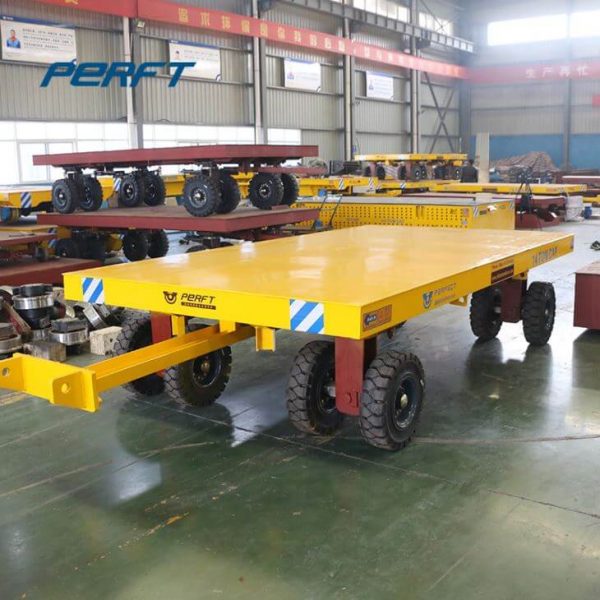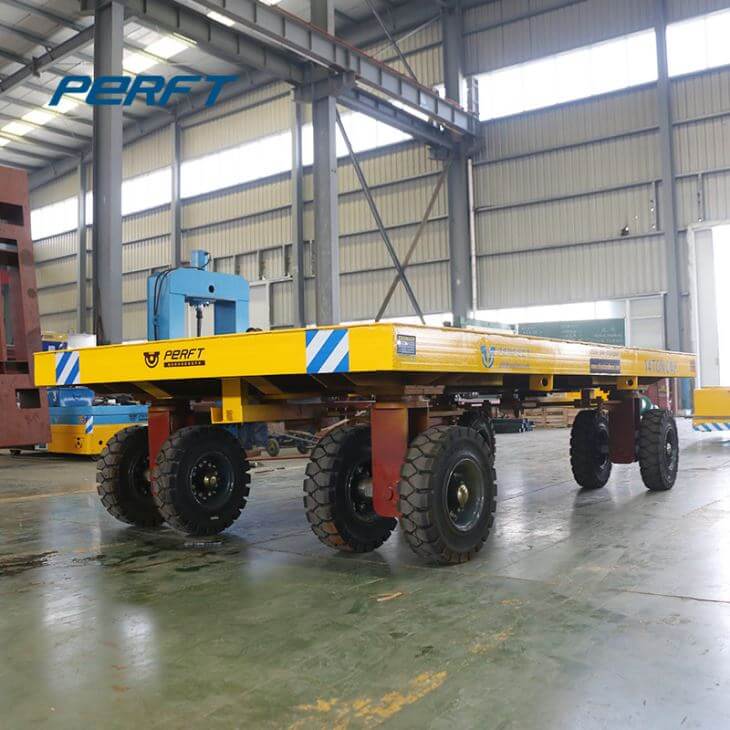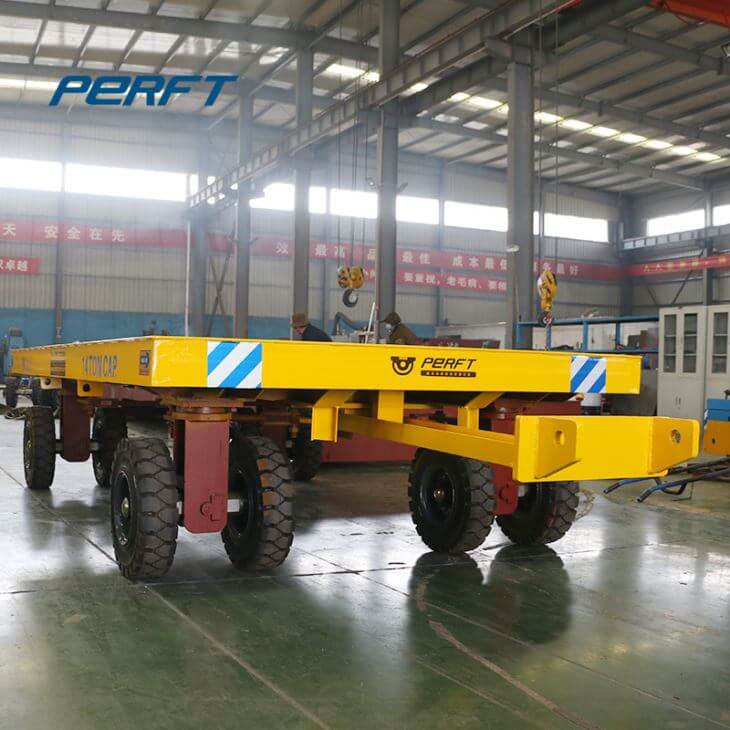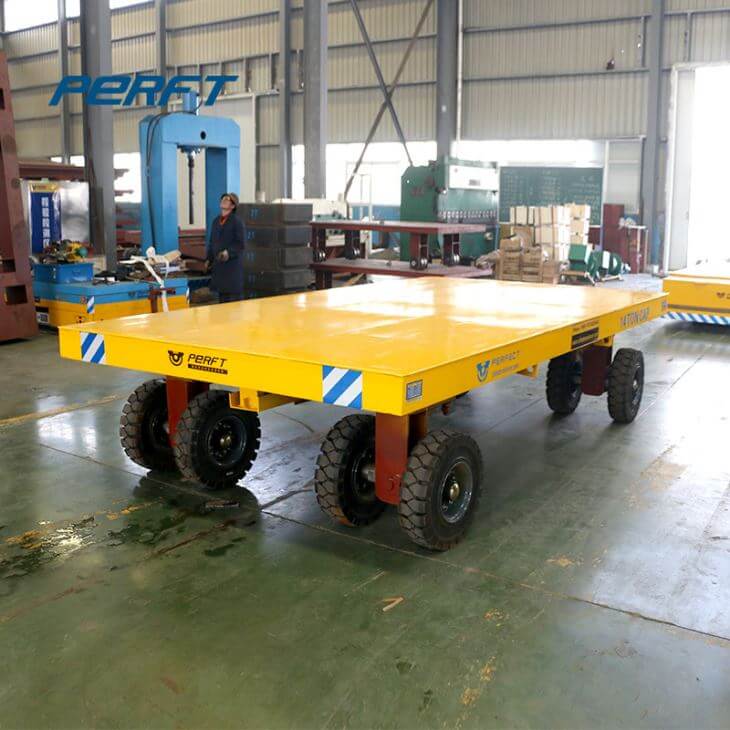A customized industrial transfer trolley to transport equipment is connected to the tractor by a pin, which is easy to disassemble. The tow bar can be installed on the front and rear of the trolley. The four wheels are connected to the turning aids by steel bars. This kind of trolley has been used for transportation in many areas of warehouses and workshops and has been defined as cost-saving, labor-saving, and high safety during use.
- The main body is made of a Q235-B steel plate, and the bottom is supported by channel steel. The self-weight will be controlled at about 2.5T, not more than 3T.
- The wheels adopt rubber wheels, which have the advantages of small deformation and low friction resistance, and the noise generated when driving on the ground is less than 30db. The wheels are all sealed, which wins the limits of the “great rain and snow roads, as well as wading the ground.”
- The transfer trolley is stable and flexible during driving, with a small turning radius and high steering accuracy. At the same time, it has strict requirements on reliability, safety, and flexibility.
- Each structural component is easy to disassemble and install, and easy to maintain.
Application
Industrial transfer trolley is suitable for a lot of areas, such chemical industry, household appliances, ceramics, metal, machinery, logistics, and other industries. And It is widely used for short-distance transport of papermaking, paint, metallurgy, mold machinery, and other industries.
Customized:
- The leaf spring damping mechanisms could be equipped on the wheels of the platform trailer, in case the cargo incline caused by the inclining body during the damping process. The damping range is 50mm(±2mm) to ensure the safety of the transfer trolley by avoiding the wheel suspension due to climbing.
- The brake mode of the transfer trolley is traction brake, which is to brake rely on the braking mode of the tractor. One proposal is that the speed should not too fast, and slow down in advance to avoid unnecessary body loss when facing climbing need and bumpy road.
- Guard plates and rails would be equipped front and back or left and right of the trailer to protect the cargoes inclining and falling down and the front guard devices is in order to prevent the cargo from knocking into the traction driver.
- The material of the guard plates is fixed directly with welded steel tubes added to the steel plate.





